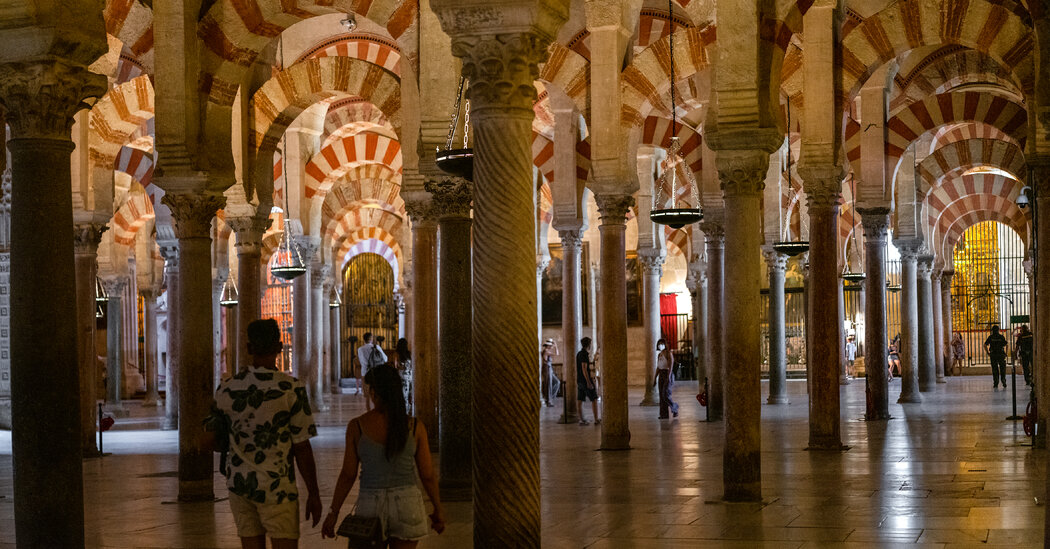There is a way through Spain that is all horseshoe arches, keyhole windows and bronze doors carved in Arabic script. It meanders into crenelated forts, Moorish castles overlooking the Mediterranean and grand mosques reconfigured by Christians into cathedrals.
As the child of an Iraqi woman and a Swedish-American man, I have always been drawn to places where West and East converge and dissolve into each other. The southern edge of Spain, where North Africa is just an hour away by water, is one of these places.
One midsummer week, my husband and I immersed ourselves in what remains of Moorish Spain, places that brought to mind the sights, sounds and scents of childhood visits to my mother’s homeland. We took an impossibly romantic path through Seville, Córdoba, Granada, Málaga, the port city of Tarifa and, finally, by ferry across the Strait of Gibraltar, to Tangier, Morocco.
Arab influence in Spain dates to the early 700s, not long after the founding of Islam, when Muslims from North Africa crossed the Strait of Gibraltar (from the Arabic for “Tariq’s rock”). The Europeans called the invaders Moors, after Mauretania, the Roman name for North Africa. Over the centuries, the Moors left a legacy in Spanish architecture, music, food and language in the region they then called al-Andalus. The name of Spain’s greatest hero, El Cid, comes from the Arabic honorific, Sayid. The 16th-century novelist Miguel de Cervantes framed his fictional story of the knight-errant Don Quixote as the translation of a recovered Arabic manuscript.
Where cultures meet, and endure
We started off in Seville, the capital of the south’s Andalusia region, arriving as a sunset haze made gold silhouettes of church domes and former minarets on the skyline. The slow, pale-green river that flows through both Seville and Córdoba is called the Guadalquivir — a Spanish pronunciation of the Arabic wadi-al-kabir, or big valley. Many other rivers in Spain contain the same Arabic root word for valley or riverbed, like the Guadalmedina and the Guadiana.
Early in the morning, we hit our jet lag with double espressos and bizcocho, a sweet, spongy cake, then strolled what is still called the Jewish quarter, despite the Jews’ expulsion over 500 years ago, past houses painted the colors of hay and bull’s blood, to the Seville Cathedral and the Alcázar (the Moorish rulers’ castle and gardens).
The Seville Cathedral — a UNESCO Heritage site and one of the largest churches in the world…
Click Here to Read the Full Original Article at NYT > Travel…
